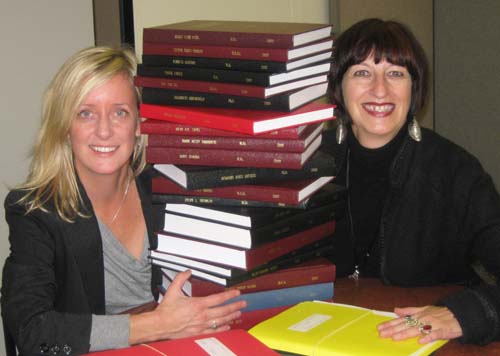
Research done: check. Analysis completed: check. Thesis written: check. And now there’s something new to add to the graduate student’s checklist: submitting your completed thesis or dissertation to the U of G’s electronic database. This requirement will be compulsory by the end of the semester, says Pauline Sinclair, director of the Office of Graduate Studies. One great benefit: as a paperless storage system, it saves money for both the student and the University.
Jane Burpee, research enterprise and scholarly communications librarian, adds: “There are many benefits to the ETD (electronic thesis and dissertation) submissions. The most obvious are that they improve the visibility and impact of U of G graduate scholarship by making their work available in an open access format. This means that their work is easily found by anyone through various search engines and then used and cited by others.”
According to Sinclair, the planning and preparation for accepting ETD submissions has been underway for several years. “We first had to establish a meta-database and work out a process,” she explains. Students are expected to print their theses as PDF files, then submit them to the Atrium. The Office of Graduate Studies is notified by email that a thesis has been sent in, and arranges for the document to be reviewed.
“If there are any problems, such as page numbering mistakes or formatting issues, it’s sent back to the student to be fixed,” says Sinclair. Once an acceptable version is received, the thesis is placed in the Atrium and will eventually be picked up by the Library and Archives of Canada (which checks periodically for new theses). The documents can be found by anyone doing electronic searches on a particular topic.
Although the Library and Archives of Canada cannot presently accept multiple files in different formats, the Atrium can, and that means researchers who have videos, photographs and sound recordings to go with their written theses can attach those items, in electronic form, to the main file. “This allows so much more to be included,” says Sinclair. “We used to have to attach CDs of sound recordings when they were needed for a thesis; this is so much better.”
While this is a new process, it’s been designed to be simple – and there’s help if you need it. Burpee says: “The ETD submission process is relatively straightforward. For anyone with qualms, monthly workshops are offered, and students can register for a workshop through the campus REG system.”